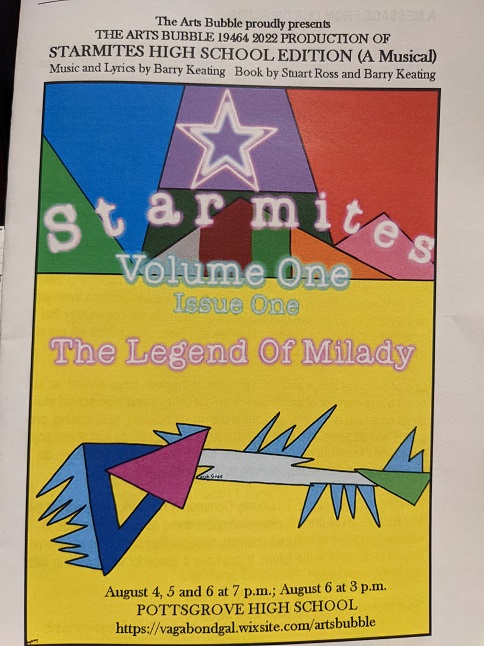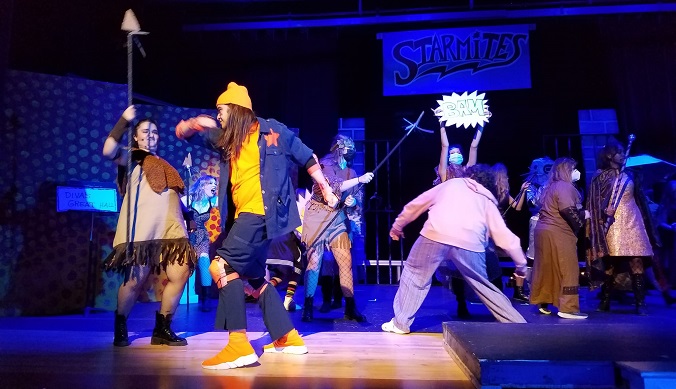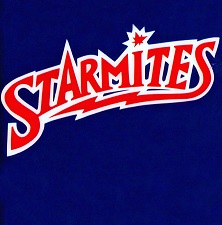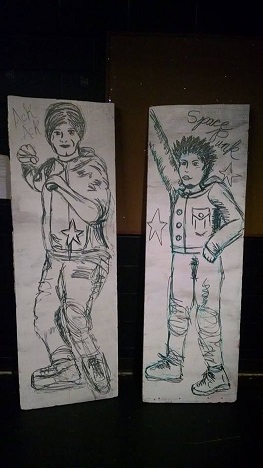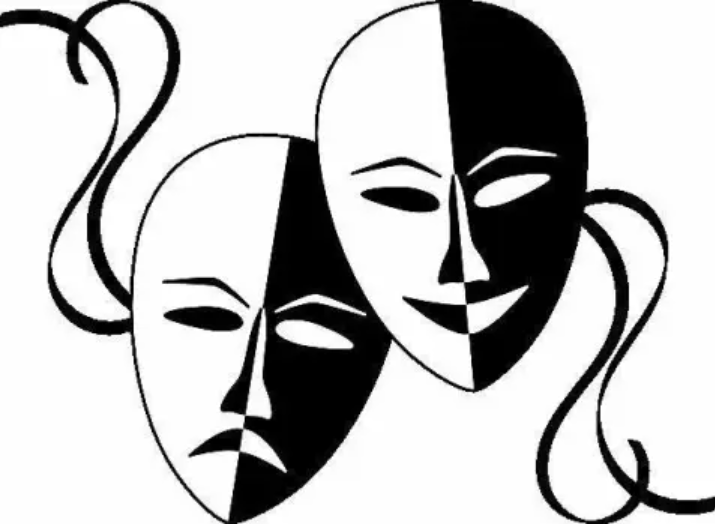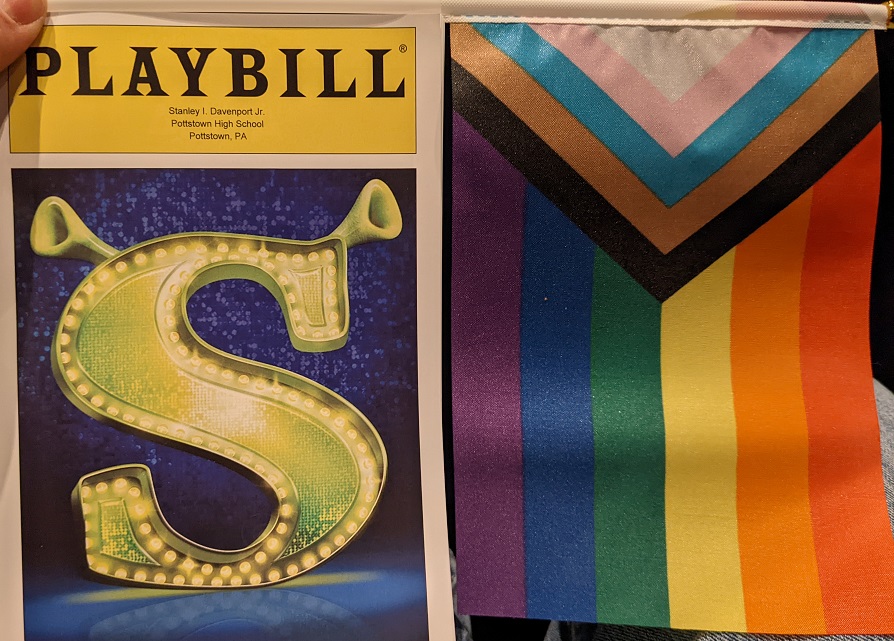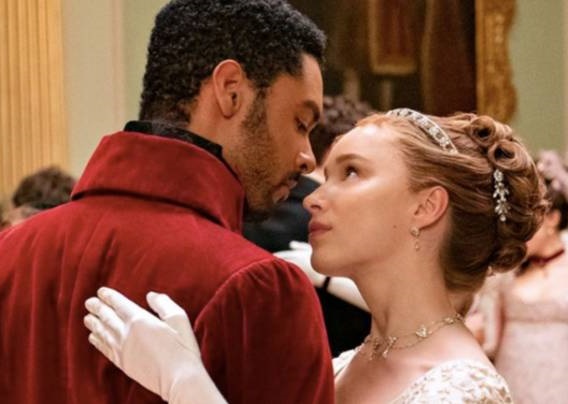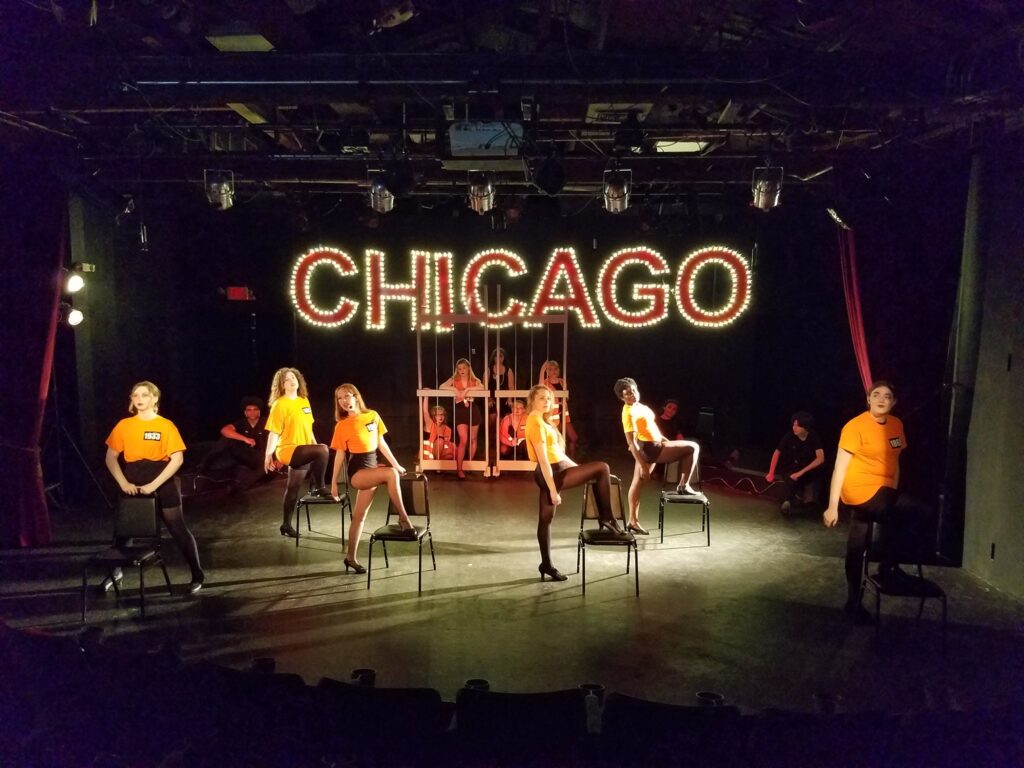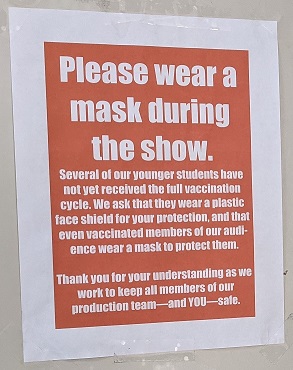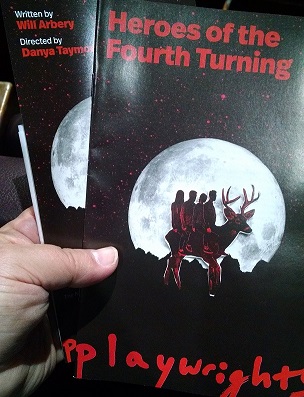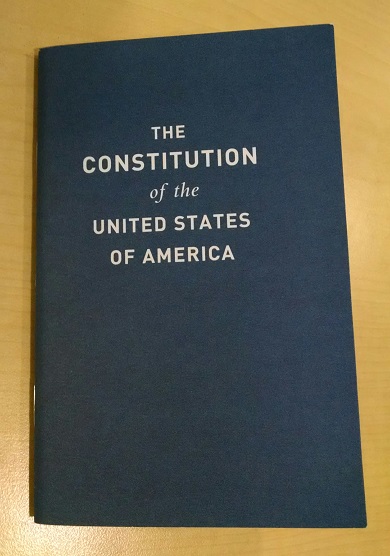This is a post about going to see SIX on Broadway, a very popular musical which has just begun performances post-COVID. Tickets are in high demand and very expensive and it was only by good fortune that my partner and I were able to go.
GETTING THERE
Since the show opened in previews on September 17, I had been entering the Broadway Direct lottery to get tickets. I don’t know all the details of this program, just that tickets are offered for a very low price to certain extremely popular shows that might be priced out of the range of many theater goers. But it’s a lottery; you sign up for the next day’s show and some small number of winners are offered tickets at a steep discount. I had entered the lottery for Hamilton every day for a very long time, before we finally went to see the show in Chicago a couple years ago. Every day I would sign up in the morning, and in the evening would get an email wishing me better luck next time. I started doing the same for SIX, expecting the same fruitless results.
Imagine my excitement when an email came informing me that I was on the waiting list. If I was chosen (presumably because another winner had missed or passed up their chance to buy the tickets) I would get another email, after which I would have 60 minutes to purchase the tickets. I waited expectantly and not an hour later a second email came. I had won the tickets! It was two tickets (the most you could sign up for) and they were $30 each. I quickly paid for them, and bragged about it on social media.
Next I had to reshuffle my work schedule, since it was such short notice. I honestly never thought I would win and that this would ever come up. I had won the tickets for the Thursday, September 23rd performance at 8 PM, but I had obligations at work that would normally have kept me late. There was no way to keep these obligations and make it to the show. But I was able to get other team members to take them on for me, so I could work a half day and we could leave as soon in the afternoon as possible.
The next day Aileen and I left at about 3:00PM, driving to New York City. Parking had already been arranged. It was raining heavily, which slowed us down. It took us over three hours to get there, and by the time we parked and made it to the theater we were soaking wet, despite having thoughtfully brought umbrellas with us. We had hoped to eat some dinner first, but it was already after 7 and there just wasn’t anywhere appealing to even grab a quick bite. We decided to get in line and eat out of the concession stand in the theater.
SAFETY CONCERNS
We were concerned, of course, about COVID-19. This concern had kept us from attending other events, and generally limited our going out to do anything lately. But I guess the lure of getting such a huge discount on tickets, and of seeing a show that is the current hype, was too much. Plus they had COVID-19 protocols in place – you had to be vaccinated, had to have proof of such, and were required to wear a face mask in the theater.
In line, everyone was indeed wearing a face mask. Not much of an intersection between the anti-masker crowd and the Broadway theater audience crowd, perhaps. There was a friendly young man who had a badge on identifying him as a COVID safety officer, who examined our ids and our proofs of vaccination. I had the original card they had given me at the drug store when I got vaccinated, and Aileen had a photocopy of hers. We were given the all clear. We had to wonder, though, if anyone might have showed fake evidence. It wouldn’t be too hard to rig up a fake card, especially if a photocopy or a picture on your smartphone were acceptable.
Once in the theater, we discovered that our tickets were in the front row. This was another fun twist. It also made us a little more comfortable from a COVID perspective, because we had room in front of us. The extra room also helped with the drying off bit. I got us some very expensive pretzels and candy from the concession stand and we sat and waited for the show to begin.
THE SHOW
SIX is an hour and a half long show that is basically a rock concert ostensibly performed by the six wives of King Henry VIII. The idea is that they’ve come back from the dead to entertain the crowd with their stories. So since they’ve come back from the dead, they aren’t required to be historically accurate. Their costumes are kind of half way between renaissance dress and glam rock or pop from modern times. It’s an all-female cast, including the musicians, who are also on stage. It’s also cast color-blind, in that the wives are not cast with ethnic accuracy to the original wives: they are black, white, brown and one is Asian. Each wife sings a solo about her own story, and these songs are bookended by ensemble numbers that set up the show and wrap it up with a message of female empowerment.
The Broadway 2021 production is energetic and a lot of fun. The singing is expert, the lyrics catchy and clever (with a lot of historical facts mixed with anachronistic references to the present), and the boots, according to my partner, are “freaking sweet.” Sitting in the front row helped draw me into the celebrity worship aspect, as I sat (and later stood as requested), staring raptly at the performers. I even got a flirtatious glance from Katherine Howard during her number (I think).
Henry VIII is arguably one of the most famous monarchs in history. The play references his fame a lot, and the subsequent fame of his wives and their personal reputations. The wives spend the bulk of the play arguing with one another over who was most maligned by the portly Prince. SIX also questions whether it was Henry who made his wives famous, or the other way around. Although the play (at just around 80 minutes with no intermission) seems short for a Broadway outing, the snarking of the queens feels like it goes on a bit too long. But once it gets to the meat of WHY the queens are famous, it finishes well. These women are, after all, the original “Real Housewives of Hampton Court,” and just as much celebrities as their shared spouse.
Even though the musical is short, it has lingered with us long after those 80 minutes. Since last week, we’ve been really interested in the six wives and their impact on history – which is epic, really, when you think about what happened to England because of their relationships with Henry. The Tudors were arguably one of the most impactful families of that, or any time. So we decided to watch The Tudors Showtime series again, and I started reading a book Aileen has about the six wives.
Well, I can assure you from reading the book that the Showtime series is no more accurate than this Broadway production. But that’s not the point, right? These shows are fictionalized recreations of well known historical figures and events that use facts and invention equally, as convenient. These aren’t really the six wives of Henry VIII, these are celebrity rock star versions. The program for SIX even mentions the specific pop stars after whom each queen is modeled. We’re supposed to treat them like divas.
Is it weird or wrong to worship celebrities? If it’s an all-consuming part of one’s life, I would say that’s not healthy – but for the short duration of an 80 minute diva rock roast, it feels like silly fun to pretend. Theater is a mutual relationship between performer and audience. Each needs the other to generate the emotional tension and catharsis that is the heart of theater and SIX relies on it.
The celebrity worship aspect is also, I suppose, part of why the ticket prices for this show are so high. Young women everywhere are reveling in these empowering tunes right now. That and the simple fact that it’s the current hot thing. If you try to book front row seats for an upcoming performance right now, you’ll find they are going for $500. I can’t imagine paying that much; it’s not that good. I’m not sure that any show is worth $500 to me, frankly. But it was certainly worth the price we paid, even a bit more, and that’s with all the hassle of getting there in the pouring rain. I would love to see it again, but from the back where I could get a better appreciation of the choreography and blocking and those “freaking sweet” heels.
(Full disclosure – Aileen helped me a lot with this one, because she is a theater reviewer. Soon she will be uploading her own blog posts here, so look for that!)
